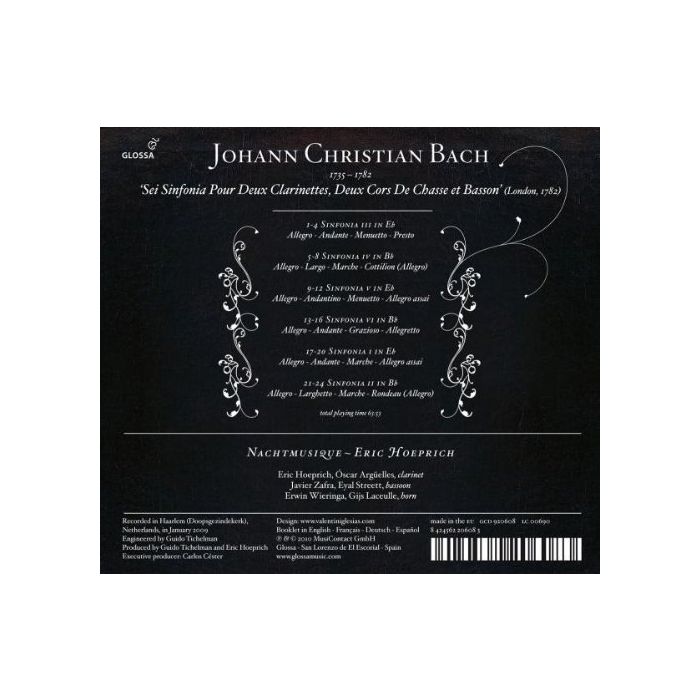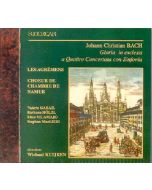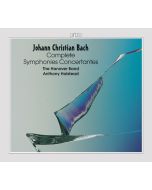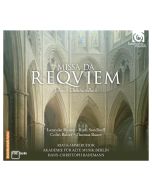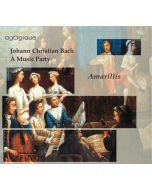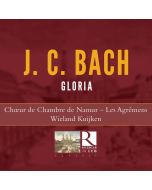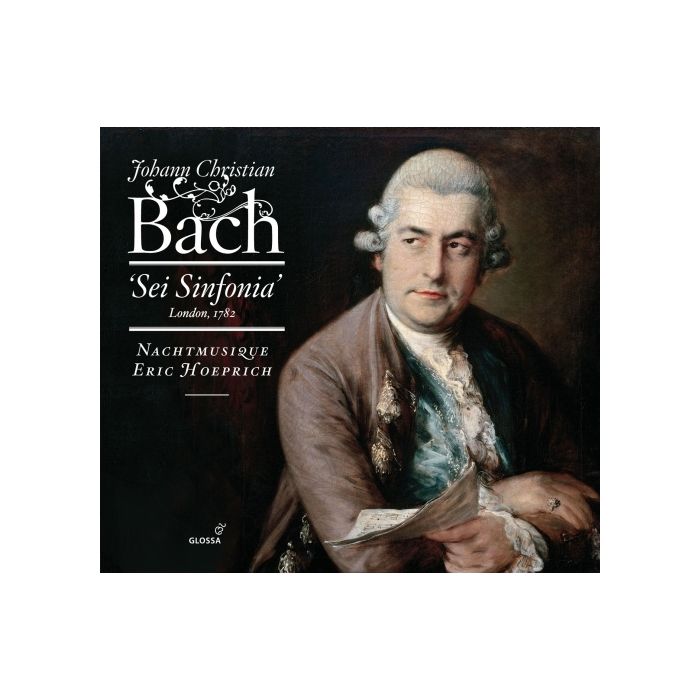
(Produkt nie został jeszcze oceniony)
kompozytor
Bach, Johann Christian
tytuł
Bach, J.C.: ‘Sei Sinfonia’ London 1782 - ‘Sei Sinfonia Pour Deux Clarinettes, Deux Cors de Chasse et Basson’
wykonawcy
Hoeprich, Eric, Nachtmusique
nr katalogowy
GCD 920608
opis
Johann Christian Bach (1735-1782), the youngest son of Johann Sebastian Bach and Anna Magdalena, moved to London in 1762, where three operas were staged rapidly in succession with immediate success. With his reputation established, he settled for good in the British capital where he spent the remainder of his life; thus the epithet, “the English Bach”. • The works for wind sextet recorded here, his Sei Sinfonia, were published in London, posthumously, in 1782. The Sei Sinfonia adopt the structure of a Classical symphony with four movements in the usual order: opening allegros are in sonata form, followed by lovely, inventive adagios and either a minuet or a “march”, and ending with terse, quick movements, often in two. Stylistically we see Johann Christian Bach as a major proponent of the “galant” style, considered a move away from the contrapuntal restrictions of his father’s music and as a precursor to the Classical idiom of Haydn, Mozart and Beethoven. But every rule embodies an exception, and although this music is quite poised and indeed “galant”, it also seethes with expression of deeper emotion more readily associated with other artistic trends of the era, such as Empfindsamkeit and Sturm und Drang. • • The instruments used in this recording would have been of exactly the type known to Johann Christian Bach.
nośnik
CD x 1
wydawca
Glossa
data wydania
2.02.2010
EAN / kod kreskowy
8424562206083
68,00 zł
Produkt dostepny w niewielkiej ilości.
Wysyłka w ciągu 3 dni roboczych
Darmowa wysyłka dla zamówień powyżej 300 zł!
Darmowy kurier dla zamówień powyżej 500 zł!
sprawdź koszty wysyłki